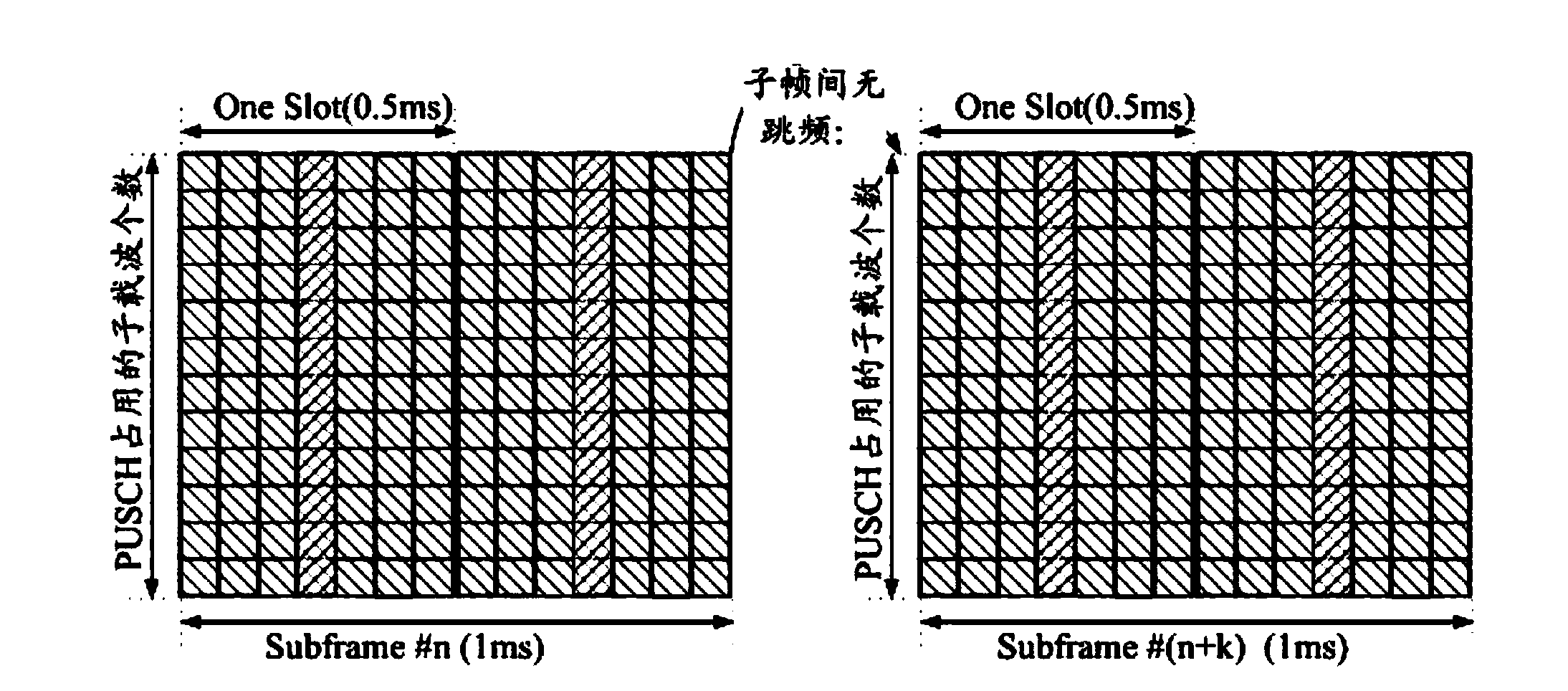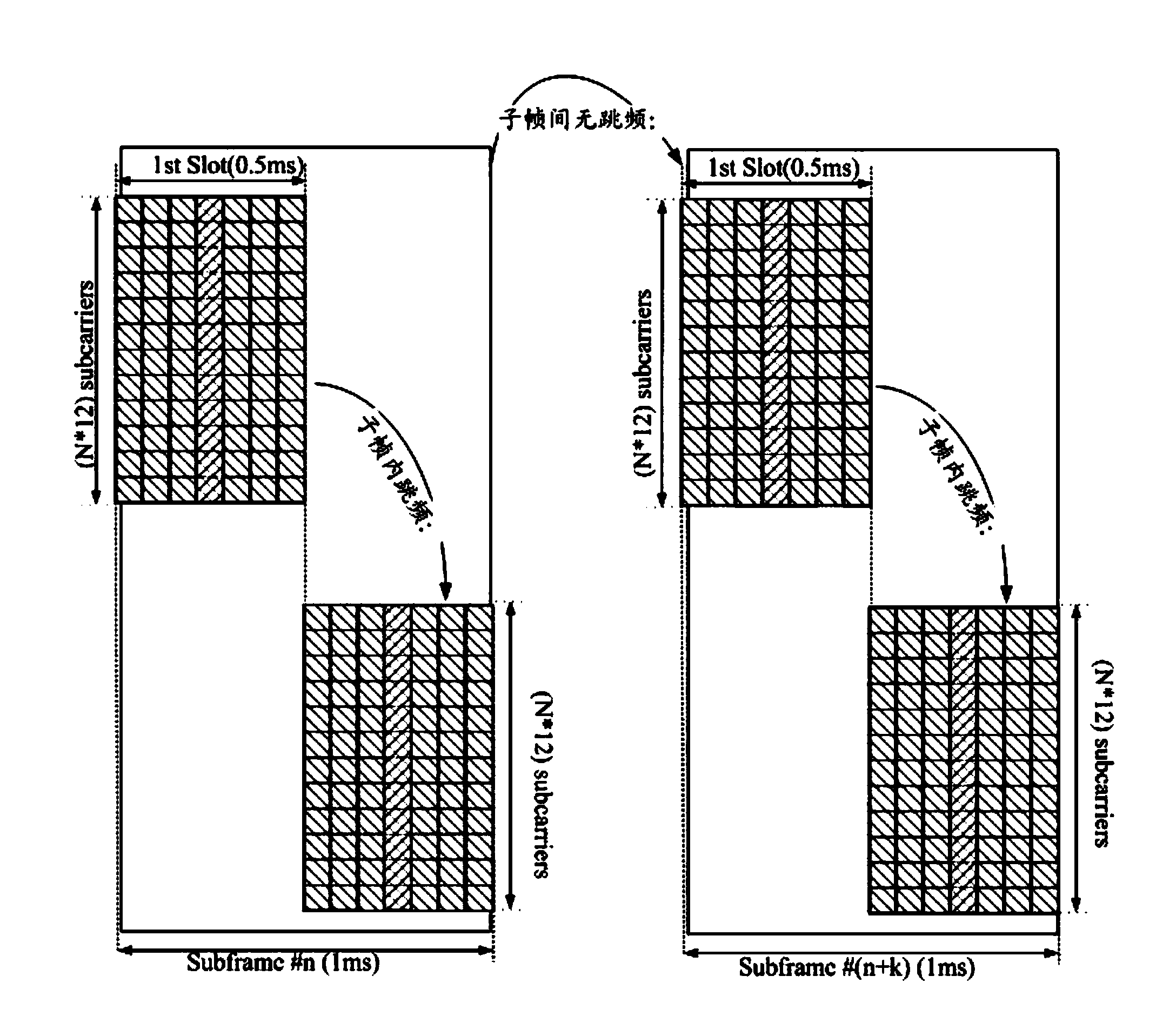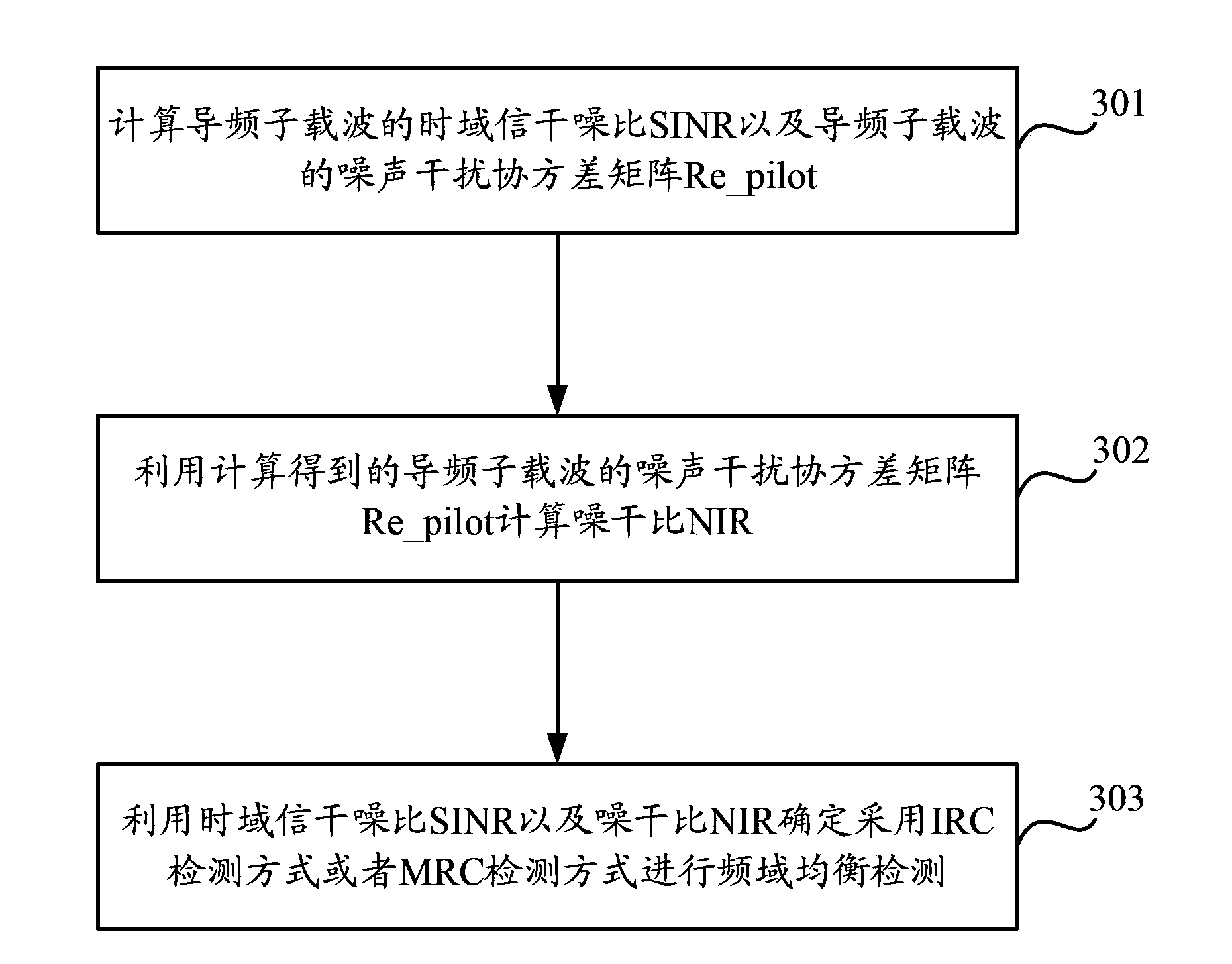Method and device for frequency domain equalization detection
A technology of frequency domain equalization and detection methods, which is applied in the communication field, can solve problems such as the decrease of calculation accuracy, the deterioration of detection performance, and the decline of detection performance, so as to achieve the effect of ensuring detection performance
- Summary
- Abstract
- Description
- Claims
- Application Information
AI Technical Summary
Problems solved by technology
Method used
Image
Examples
Embodiment 1
[0046]The downlink of the LTE system adopts OFDMA (Orthogonal Frequency Division Multiple Access, Orthogonal Frequency Division Multiple Access), and the uplink adopts SC-FDMA technology. Each user in the cell is orthogonal to each other and there is no interference. The same frequency band is used between cells, and the interference between cells becomes the main interference. In many practical scenarios, LTE uplink is an interference-limited system, and narrow-band interference may exist in some PRB bandwidths; in interference-limited systems (there are relatively large Strong inter-user interference or co-channel interference caused by frequency reuse), when the interference plays a dominant role in the received signal, the MRC detection method treats the above interference as noise, and the performance of the IRC detection method is better than that of the MRC detection method at this time; When the interference does not play a dominant role in the received signal, the IRC ...
Embodiment 2
[0112] Based on the same inventive concept as the above method, an embodiment of the present invention also provides a frequency domain equalization detection device, such as Figure 4 As shown, the equipment includes:
[0113] The first calculation module 11 is used to calculate the time-domain signal-to-interference-noise ratio SINR of the pilot subcarrier;
[0114] The second calculation module 12 is used to calculate the noise interference covariance matrix Re_pilot of the pilot subcarrier;
[0115] The third calculation module 13 is used to calculate the noise-to-interference ratio NIR by using the noise-interference covariance matrix Re_pilot of the pilot subcarrier;
[0116] The determining module 14 is configured to use the time-domain signal-to-interference-noise ratio SINR and the noise-to-interference ratio NIR to determine that frequency domain equalization detection is performed in an interference suppression combined IRC detection method or a maximum ratio combi...
PUM
 Login to View More
Login to View More Abstract
Description
Claims
Application Information
 Login to View More
Login to View More - R&D
- Intellectual Property
- Life Sciences
- Materials
- Tech Scout
- Unparalleled Data Quality
- Higher Quality Content
- 60% Fewer Hallucinations
Browse by: Latest US Patents, China's latest patents, Technical Efficacy Thesaurus, Application Domain, Technology Topic, Popular Technical Reports.
© 2025 PatSnap. All rights reserved.Legal|Privacy policy|Modern Slavery Act Transparency Statement|Sitemap|About US| Contact US: help@patsnap.com



